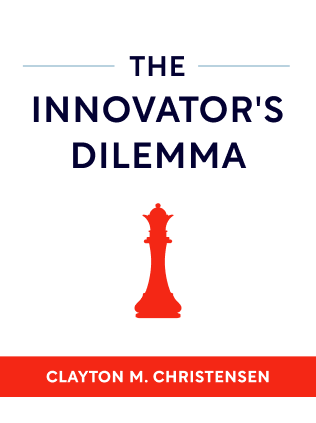

This article is an excerpt from the Shortform summary of "The Innovator's Dilemma" by Clayton M. Christensen. Shortform has the world's best summaries of books you should be reading.
Like this article? Sign up for a free trial here .
Is there a Hewlett-Packard case study about innovation? What does the HP case study demonstrate about the company’s Kittyhawk project?
The HP Kittyhawk was a small disk drive that the company was developing to target the PDA market. This Hewlett-Packard case study identifies some of the challenges with the company’s approach to innovation.
Read on for an HP case study on innovation.
HP Case Study: Kittyhawk
This Hewlett-Packard case study, or HP case study goes back to the early 1990s. HP’s Disk Memory Division (DMD) pitched a 1.3-inch disk drive that they named the HP Kittyhawk.
As a $20 billion company, HP had high profit goals to meet, so executives demanded that the product reach $150 million in revenue within three years. DMD employees were confident they could reach the goal, because they were targeting the emerging market of personal digital assistants (PDAs), and they expected PDAs to boom.
HP worked with PDA makers to determine the capabilities Kittyhawk would need to suit the devices. Many of the PDA makers—including Apple, IBM, and Microsoft—also designed their new products to fit Kittyhawk.
Neither HP nor the PDA makers predicted that the PDA market would largely turn out to be a flop. As we talked about, Apple’s Newton had sales that would’ve excited a small company, but they fell far short of expectations. The same was true across the industry, and Kittyhawk’s sales suffered.
However, a different market for the HP Kittyhawk materialized. HP sold the drives to makers of electronic cameras, miniature cash registers, industrial scanners, and portable Japanese-language word processors.
Then, the HP innovation project got an opportunity for redemption: Video game system makers approached HP about using Kittyhawk in their devices, which would’ve been a significant sales boost. But the drive would need to be less robust so it could have a lower price point.
By that point, HP innovation efforts had already required many resources for tailoring Kittyhawk to PDAs that executives weren’t willing to spend the time and money on redesigning it to fit the video game system market. They hadn’t expected that it might take multiple iterations of the disruptive product to get it right.
This HP case study shows that a discovery-driven approach would have kept the Kittyhawk team from betting big on PDAs. Instead of tailoring the drives so specifically to the needs of PDAs, the team could have made the design flexible enough to allow them to easily add or remove features for other customers that emerged. And instead of investing in a high-volume, automated production line, the team could have built smaller production facilities and been open to the possibility of building more later if necessary.

———End of Preview———
Like what you just read? Read the rest of the world's best summary of Clayton M. Christensen's "The Innovator's Dilemma" at Shortform .
Here's what you'll find in our full The Innovator's Dilemma summary :
- Christensen's famous theory of disruptive innovation
- Why incumbent companies often ignore the disruptive threat, then move too slowly once the threat becomes obvious
- How you can disrupt entire industries yourself






